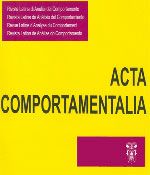Prime éducation et principes behavioristes: Watson et l'art de modeler les enfants
Contenido principal del artículo
Resumen
La dernière publication de Watson dans un cadre universitaire date de 1920. Elle a trait au conditionnement de la peur chez un jeune enfant, le petit Albert. Partant de cette expënmentation, cet article se fonde sur les publications de Watson après 1920, principalement des libres el des articles de revue destinés au grand public, dans lesquelles il s'efforce de dëmontrer les possibilités d'application de la théorie benaviortste, notamment à l'éducation des enfants. Pour ce faire, il s'approprie des notions déjà présentes dans les ouvrages de puériculture de son époque, et qu'il enrobe d'une rhétorique assertive. Il s'agit pour Watson de substituer à I'obscurannsme de l'éducation traditionnelle un véritable projet scientifique. L'autorité traditionnelle de la famille est ainsi remplacée par une autorité rationnelle fondée sur un savoir. Il s'agit cofin, en opérant sur cette pate malléable qu'est le bébé, d'inculquer le respect de l'ordre et la soumission aux règles, valeurs d'une classe moyenne pénétrée de l'universalité de sa vision du monde.
Detalles del artículo
Citas en Dimensions Service

<a rel="license" href="http://creativecommons.org/licenses/by-nc-sa/4.0/"><img alt="Licencia de Creative Commons" style="border-width:0" src="https://i.creativecommons.org/l/by-nc-sa/4.0/88x31.png" /></a><br />Este obra está bajo una <a rel="license" href="http://creativecommons.org/licenses/by-nc-sa/4.0/">licencia de Creative Commons Reconocimiento-NoComercial-CompartirIgual 4.0 Internacional</a>.
